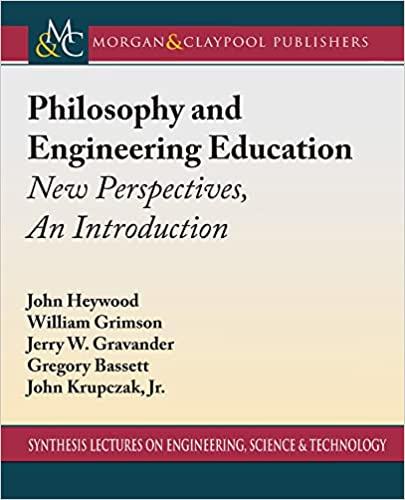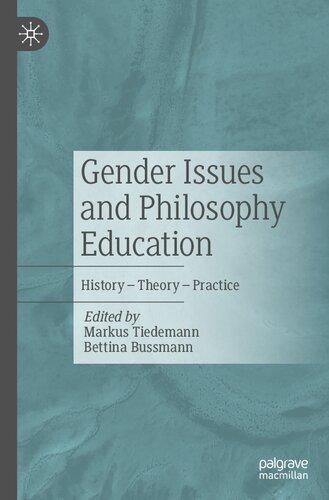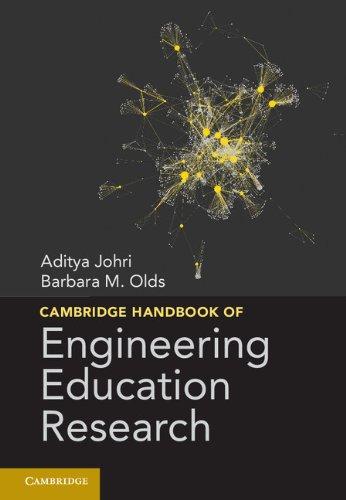SynthesisLectureson Engineering,Science,and Technology
Eachbookintheseriesiswrittenbyawellknownexpertinthefield.Mosttitlescoversubjects suchasprofessionaldevelopment,education,andstudyskills,aswellasbasicintroductory undergraduatematerialandothertopicsappropriateforabroaderandlesstechnicalaudience. Inaddition,theseriesincludesseveraltitleswrittenonveryspecifictopicsnotcovered elsewhereintheSynthesisDigitalLibrary.
PhilosophyandEngineeringEducation:NewPerspectives,AnIntroduction JohnHeywood,WilliamGrimson,JerryW.Gravander,GregoryBassett,andJohnKrupczak,Jr. 2021
DesigningEngineeringandTechnologyCurricula:EmbeddingEducationalPhilosophy JohnHeywood 2021
IntroductiontoEngineeringDesign AnnSaterbakandMatthewWettergreen 2021
VisualizingDynamicSystems:VolumetricandHolographicDisplay MojganM.Haghanikar 2021
BiologicallyInspiredDesgin:APrimer TorbenA.LenauandAkhleshLakhtakia 2021
EngineeringDesign:AnOrganicApproachtoSolvingComplexProblemsintheModern World GeorgeD.CatalanoandKarenC.Catalano 2020
IntegratedProcessDesignandOperationalOptimizationviaMultiparametric Programming
BarisBurnak,NikolaosA.Diangelakis,andEfstratiosN.Pistikopoulos 2020
TheArtofTeachingPhysicswithAncientChineseScienceandTechnology
MattMarone 2020
ScientificAnalysisofCulturalHeritageObjects
MichaelWiescherandKhachaturManukyan 2020
CaseStudiesinForensicPhysics
GregoryA.DiLisiandRichardA.Rarick 2020
AnIntroductiontoNumericalMethodsforthePhysicalSciences
ColmT.Whelan 2020
NanotechnologyPastandPresent
DebNewberry 2020
IntroductiontoEngineeringResearch
WendyC.Crone 2020
TheoryofElectromagneticBeams
JohnLekner 2020
TheSearchfortheAbsolute:HowMagicBecameScience
JeffreyH.Williams 2020
TheBigPicture:TheUniverseinFiveS.T.E.P.S. JohnBeaver 2020
RelativisticClassicalMechanicsandElectrodynamics
MartinLandandLawrenceP.Horwitz 2019
GeneratingFunctionsinEngineeringandtheAppliedSciences
RajanChattamvelliandRamalingamShanmugam 2019
TransformativeTeaching:ACollectionofStoriesofEngineeringFaculty’sPedagogical Journeys
NadiaKellam,BrookeColey,andAudreyBoklage 2019
AncientHinduScience:ItsTransmissionandImpactonWorldCultures AlokKumar 2019
ValueRationalEngineering
ShuichiFukuda 2018
StrategicCostFundamentals:forDesigners,Engineers,Technologists,Estimators, ProjectManagers,andFinancialAnalysts
RobertC.Creese 2018
ConciseIntroductiontoCementChemistryandManufacturing TadeleAssefaAragaw 2018
DataMiningandMarketIntelligence:ImplicationsforDecisionMaking MustaphaAkinkunmi 2018
EmpoweringProfessionalTeachinginEngineering:SustainingtheScholarshipof Teaching JohnHeywood 2018
TheHumanSideofEngineering
JohnHeywood 2017
GeometricProgrammingforDesignEquationDevelopmentandCost/Profit Optimization(withillustrativecasestudyproblemsandsolutions),ThirdEdition
RobertC.Creese 2016
EngineeringPrinciplesinEverydayLifeforNon-Engineers SaeedBenjaminNiku 2016
A,B,See...in3D:AWorkbooktoImprove3-DVisualizationSkills
DanG.Dimitriu 2015
The CaptainsofEnergy:SystemsDynamicsfromanEnergyPerspective
VincentC.PrantilandTimothyDecker 2015
LyingbyApproximation:TheTruthaboutFiniteElementAnalysis
VincentC.Prantil,ChristopherPapadopoulos,andPaulD.Gessler 2013
SimplifiedModelsforAssessingHeatandMassTransferinEvaporativeTowers
AlessandraDeAngelis,OnorioSaro,GiulioLorenzini,StefanoD’Elia,andMarcoMedici 2013
TheEngineeringDesignChallenge:ACreativeProcess
CharlesW.Dolan 2013
TheMakingofGreenEngineers:SustainableDevelopmentandtheHybridImagination AndrewJamison 2013
CraftingYourResearchFuture:AGuidetoSuccessfulMaster’sandPh.D.Degreesin Science&Engineering
CharlesX.LingandQiangYang 2012
FundamentalsofEngineeringEconomicsandDecisionAnalysis
DavidL.WhitmanandRonaldE.Terry 2012
ALittleBookonTeaching:ABeginner’sGuideforEducatorsofEngineeringand AppliedScience
StevenF.Barrett 2012
EngineeringThermodynamicsand21stCenturyEnergyProblems:ATextbook CompanionforStudentEngagement DonnaRiley 2011
MATLABforEngineeringandtheLifeSciences
JosephV.Tranquillo 2011
SystemsEngineering:BuildingSuccessfulSystems HowardEisner 2011
FinShapeThermalOptimizationUsingBejan’sConstructalTheory GiulioLorenzini,SimoneMoretti,andAlessandraConti 2011
GeometricProgrammingforDesignandCostOptimization(withillustrativecasestudy problemsandsolutions),SecondEdition
RobertC.Creese 2010
SurviveandThrive:AGuideforUntenuredFaculty
WendyC.Crone 2010
GeometricProgrammingforDesignandCostOptimization(withIllustrativeCaseStudy ProblemsandSolutions)
RobertC.Creese 2009
StyleandEthicsofCommunicationinScienceandEngineering
JayD.HumphreyandJeffreyW.Holmes 2008
IntroductiontoEngineering:AStarter’sGuidewithHands-OnAnalogMultimedia Explorations
LinaJ.KaramandNajiMounsef 2008
IntroductiontoEngineering:AStarter’sGuidewithHands-OnDigitalMultimediaand RoboticsExplorations
LinaJ.KaramandNajiMounsef 2008
CAD/CAMofSculpturedSurfacesonMulti-AxisNCMachine:TheDG/K-Based Approach
StephenP.Radzevich 2008
TensorPropertiesofSolids,PartTwo:TransportPropertiesofSolids
RichardF.Tinder 2007
TensorPropertiesofSolids,PartOne:EquilibriumTensorPropertiesofSolids
RichardF.Tinder 2007
Essentials ofAppliedMathematicsforScientistsandEngineers
RobertG.Watts
2007
ProjectManagementforEngineeringDesign
CharlesLessardandJosephLessard
2007
RelativisticFlightMechanicsandSpaceTravel
RichardF.Tinder
2006
Copyright©2022byMorgan&Claypool
Allrightsreserved.Nopartofthispublicationmaybereproduced,storedinaretrievalsystem,ortransmittedin anyformorbyanymeans—electronic,mechanical,photocopy,recording,oranyotherexceptforbriefquotations inprintedreviews,withoutthepriorpermissionofthepublisher.
PhilosophyandEngineeringEducation:NewPerspectives,AnIntroduction JohnHeywood,WilliamGrimson,JerryW.Gravander,GregoryBassett,andJohnKrupczak,Jr. www.morganclaypool.com
ISBN:9781636392868paperback
ISBN:9781636392875PDF
ISBN:9781636392882hardcover
DOI10.2200/S01151ED1V01Y202111EST019
APublicationintheMorgan&ClaypoolPublishersseries SYNTHESISLECTURESONENGINEERING,SCIENCE,ANDTECHNOLOGY
Lecture#19 SeriesISSN Print2690-0300Electronic2690-0327
HaveaPhilosophyof Education?
JohnHeywood
1.1ABSTRACT
Argumentsforengineeringeducatorshavingaformulatedphilosophyofengineeringeducation arepresented.Theperspectivesthatapersontakestomoraldilemmaswillbedrivenbythebeliefs theyhaveaboutthenatureofmoralityandtruth.Similarly,thebeliefsthatapersonhasabout thecontentofthecurriculum,instruction,andlearningwill,inalllikelihood,befoundedonone ofthegreat“isms”ofphilosophy.Adiscussionofthedebatethatfollowedthepublicationofthe recentrevisionoftheABETcriteriainlightoffourcurriculumideologiesisusedtoillustrate thisargument.Aswouldbeexpected,suchconferencedebatesareconductedata“surface”level whentheyneedtobeconducted“indepth.”Butthiscannothappenwithouteveryengineering educatorbeingversedinthephilosophiesthatthesedifferentpositionsembrace.Itisdoubtfulif hardandfastpositionswouldthenbemaintained,anditwouldbestrangeiftherewasnorenewal ofthecurriculumwithanattendantrestructuring.Suchistheneedforprofessionaltraining inpedagogyinwhicheducatorsaregiventheopportunitytoexploreavarietyofphilosophies andlearningapproaches.Suchactivityisphilosophy,andtheresultwillbeanarticulatedand defensiblephilosophyofengineeringeducation.
1.2BEYONDOPERATIONAL(WORKING)PHILOSOPHY TOADEFENSIBLETHEORYOFENGINEERING EDUCATION
Itcomesasashocktomanypeopletofindtheirthoughtsarenotasindependentastheyfeel themtobe.Theyfindthatmanyoftheattitudestheypossessareformednotindependently
1.PHILOSOPHYANDENGINEERINGEDUCATION
butbymanyexternalforcesthatimpingeuponthem.Itcomesasapowerfulshocktofindthat thefamily,andmorethanthat,theinteractionswiththeirpeergroupsatschoolandworkhave hadalastingimpactontheirbehaviour.Theywouldnodoubtunderstandthatthepurpose ofschoolingwastoimpactonthem.Takentogethertheymaywonderwhatindependenceof thoughttheyhave.Fortunately,mostofusavoidthetraumathatsuchthoughtsbringandcarry onasifthethingswedoaredriventotallybytheactivityofourfreewill.Incontrast,weoften wanttobeabletoinfluenceothers,andinsomecasesweareluckyenoughtohavethatasajob as,forexample,teachers,therefore,bydefinitionengineeringeducators.
Toputitinanotherway,theoperational(working)philosophiesthatdriveourbelief systemsandconsequentlyourbehavioursdonotarisefromindependentthinkingbutfromthe wayinwhichweinteractwithotherpersons[1].Indeed,asthephilosopherJohnMacmurray concludedthatwecometoknowwhoweareasindividualsonlyinpersonalrelationships[2].But wedomakedecisionsanditisinthemakingofthedecisionsthatwebegintheactoflearning. Forthemostpart,mostofusdonotquestiontheoperationalphilosophiesorbeliefsystemsthat driveourlearning.Inanycase,forthemostpart,theyareimplicitlyheld.Consider,forexample, howourphilosophyofengineering,thatis,whatwebelieveengineeringtobe,wasformed.Was itsimplyaformofappliedscienceorsomethingmore?Thenconsider,ifafterexperiencein industry,thisviewhaschanged.Now,ifweareconsideringteachingorareteaching,shouldwe spendsometimeconsideringwhatengineeringis?Thevolumesinthisseriesareintendedto presentthereaderwiththischallenge.
Itisarguedthateveryengineeringeducatorshouldhaveathoughtoutviewofwhatengineeringis,becausewhathappensinengineeringshoulddictateinnosmallwaytheprocessofthe curriculum,itsgoals,andthemeansofachievingthem.Bycurriculum,itmeansalltheformal andinformalfactors(e.g.,organizationalstructure,peers,tutorialarrangements)thatinfluence themotivationtolearn[3–6].
Manyargue,asdoWilliamGrimsonandJerryGravanderinChapters 2 and 3,thataphilosophyofengineeringeducationthatunderpinswhatwedoinpracticeisnotpossiblewithout firstdevelopingouroperationalphilosophiesofengineeringbeyondtheimplicittosomething substantialandexplicit.Andthat,arguesWilliamGrimsoninChapter 2,maybeachievedby anunderstandingofthe“isms”ofphilosophyastheyhavedevelopedfromAristotleandPlato onwards.Toputitinanotherway,engineersneedtounderstandwhotheyareiftheyareto provideacurriculumthatistoservetheneedsofengineering.Thatthisisimportantisevident fromthelargevolumeofliteraturethathasemergedonthedifferencesbetweenengineering andscience[7],atopicthatisconsideredbyGregoryBassettandJohnKrupczakinChapter 4.
Theleastthatcanbesaidisthatbydefinitionanengineerisachangeagent.Itfollows thattheresultsofwhatengineersdowillnecessarilyrequirechangesinthecurriculum.Yetithas proveddifficulttodoand,therefore,thegoalsthatmanyengineersandengineeringeducators thinkdesirablehavenotbeenobtained[8].Astrongcasehasbeenmadethatthereasonforthis
1.2. BEYONDOPERATIONAL(WORKING)PHILOSOPHY3 is thatengineeringeducatorshavelackedaproperphilosophicalbasethatwouldprovidethe guidelinesrequired[9].
Analternativepositionarisesfromtheviewthatsinceengineeringeducationissimplythe applicationofscience(mainlyphysics)tothesolutionofpracticalproblems,itsphilosophical basesaretobefoundinthephilosophyofscienceeducationforwhichasignificantliterature exists,e.g.,[10, 11].Indeedmanyscienceandengineeringeducatorsarecommittedtoaconstructivistperspectiveoflearningaboutwhichmuchhasbeenwritteninscience[12].Yet,whilst thereisastrongcaseforexaminingthatliteraturewithrespecttoteachingtheappliedsciences, thereisanequallysubstantialliteraturethatshowsthatengineeringissomethingmorethan theapplicationofsciencetothesolutionofproblems,notleastinthewaydesignsareborn, developed,andimplementedasBassettandKrupczakshowinChapter 4.Theyechotheview expressedinseveralsubstantivetextsthatengineeringisadifferentwayofthinkingtothatof thescientist[13, 14].GravanderisadamantinChapter 3 thatphilosophyofengineeringisnot philosophyofscience.
Withinthepracticeofengineering,differentphilosophiesleadtodifferentperspectiveson ethicalissues[15]thathaveamajorbearingonthecurriculumofferedtostudents.Forexample, “realists”takea“correspondence”theoryoftruth;thatis,astatementistrueifitcorrespondstoa stateofaffairsindependentofthestatement.Incontrast,constructivistswhoarealsorelativists (theyneednotberelativists)takea“coherence”theoryoftruth;thatis,astatementistrueif itcoheresorfitswithotherstatementsthataretrue.“Truth,theywillclaim,isconstructedby humanbeingswithinthesocietiesinwhichtheylive.Inmorality,therefore,thereisnosearch foranyrealitybeyondthemoralruleshumanbeingscreateandliveby”[16].Realists,onthe otherhand,arguethatthereisonlyonesetoftruthsandthatthetaskofmoralphilosophyisthe searchforthosetruths.Todefendamoralpositiononehastobesureaboutthebasisofone’s beliefs;thatis,theyhavetobedefensible.
Exactlythesameappliestoreasoningabouteducationalissueswhichoftendoesnotextend muchbeyondthetrivialwhencomparedtotheknowledgethatisavailable.Therecentdebate abouttheproposedrevisionoftheABETcriteriafallsintothiscategory,andillustratesthefailureoftheengineeringfraternitytohaveafundamentaldebateabouttheaimsofengineering educationthatisotherthanasetofwarringopinions.Butiftheparticipantsinanydebatehave notunderstoodthephilosophicalbasisoftheiropinionsthatistobeexpected.Priorknowledge isaprerequisitetounderstandinganyissueincludingknowledgeofone’sownassumptionsand predispositions.Hencetheneedforengineeringeducatorstohaveanarticulatedanddefensiblephilosophyofeducationwhendiscussingthegoals,content,andpedagogyofengineering education.Itisnecessary,therefore,thatinprovidingthebaseforaphilosophyofengineeringeducationitisinformedbyphilosophiesofeducation.Thesepointswillbeillustratedby referencetothedebateaboutABET’sproposalstochangetheircriteria.
1.3THEABETDEBATE
Twodimensionsofthisdebatewillbeconsidered.Thefirst,forwantofabetterterm,iscalled “technical.”Itisaboutthedesignofthecriteriaandneedtoattendto“meaning.”Itjustifies attentiontothepreceptsofanalyticphilosophyandthemeaningofstatements.Thesecond dimensionmightbestbedescribedbytheterm“philosophical.”Itseekstounderstandthebelief systemsthatdrivethecurriculumdebate,foritisaboutwhatcontentthenewregulationsallow andwhatcontenttheydonot.
1.4THETECHNICALDIMENSION:LANGUAGEAND THEMEANINGOFTHINGS
Althoughtheaveragememberofthepublic,andforthemostpartthatisyouandI,would notwanttoengageintheabstractconversationsofphilosophersonlanguage,somethingshave trickleddownintothepublicarena.Forexample,theanalyticphilosophersofthe20thcentury havemadeusincreasinglyawareoftheneedtoclarifymeaning:weknowthatifthequestions wesetinapublicexaminationareunclearthereisthepossibilitythatwewillbetakentocourt. Morepertinently,weknowthatifaninstructionwegivetoatechnicianismisunderstood,and leadstoanaccident,thatweareultimatelyresponsibleforwhathappened.Soweneedtocheck thatourinstructionsareunderstoodandnotmisunderstood.
Nowheredoestheproblemofmeaningraiseitsuglyheadmorethanintheinterpretation ofstatistics,particularlythosetobefoundinnewspapers,e.g.,onforecastsofthestateofthe economy.Sincetheyear2000,engineeringeducatorsintheU.S.havebeenrequiredbyABET toensurethattheprogramstheyteachwillachievecertainspecifiedoutcomes.Beforetheywere introducedintheyear2000,engineeringeducatorswereabletoattendmeetingsthatclarified themeaningoftheseoutcomes.Twoengineeringeducators,YokomotoandBostwick,argued that“secondarymeaningsofsomewordsaresometimesused,suchasusingtheterm‘criteria’ todescribethelevelofperformancethatstudentsmustachieveand‘outcomes’todescribethe learningbehavioursstudentsmustdemonstrate”[17].Amorecommondefinitionof“outcome” is“result”or“consequence,”andanyoneattachingthatmeaningtothewordwillsurelybecome confusedinanydiscussionaboutwritingmeasurableoutcomes.YokomotoandBostwicksaid thattheaimslistedbyABETwereconsideredtobetoobroadtobeassesseddirectly,andinthe traditionof TheTaxonomyofEducationalObjectives theyrecommendedthatthoseaimsshould bebrokendownintosmaller,moremeasurableunits[18].Theessenceoftheirargumentwas thataccreditingagenciesshouldexplainthetermsused,andusethemconsistently,andtothis endtheymadeadistinctionbetweencourseoutcomesandcourseinstructionalobjectives.Again, suchdistinctionsaredebatable.
Moregenerally,animportantaspectoflanguageisitsuseintheexpressionoftheemotions.Oneeffectoftheoutcomesmovementisthatithasremovedmanywordsfromthelanguageoftheacademiccommonroom.Onetermthathasmanymeaningsandisnoteasyto
1.5. FROMTHEOUTSIDELOOKINGIN5 define is“motivation”yet,itisverymuchadriverofourteaching—thedesiretomotivateboth studentsandteachers.Itisverymuchthelanguageofthepsychologyoflearning—readiness tolearn,reinforcement,transferoflearning,criticalthinking,problemsolving,andsoon.The ABETdebatecertainlygeneratedmanyemotions.
1.5FROMTHEOUTSIDELOOKINGIN
WhileABETisanAmericanorganization,inrecentyearsitsinfluencehasextendedbeyondits bordersandsomecountriesareusingitsaccreditationmechanisms.Thereis,therefore,internationalinterestinthebasisoftheaccreditationcriteriawhichisthejustificationforanoutsider likeme,eventhoughIamamemberofASEEusingABET,toexemplifythecentralthesis ofthischapter,namelythateveryteachershouldhaveadefensiblephilosophyofeducation. Forthisreason,anAmericanparadigmdevelopedbyMichaelSchiro[19]whichreflectsdevelopmentsinschooleducationintheU.S.,andthephilosophiesthathavedriventhem,isused asafocusfortheargument.Schirodistinguishesbetweenscholaracademic,socialefficiency, learner-centred,andsocialreconstructionideologies.IarguethattheABETdebate,asIwas abletoobserveit,wasaconflictbetweendifferentideologies.
1.6IDEOLOGIESBEHINDTHEDEBATE
(1) Thescholaracademicideology—JohnEggleston,anEnglisheducationalsociologistand technicaleducator,hasdescribeda“received”paradigmofthecurriculumwhichhelpsto introduceSchiro’sscholaracademicideology[20].Knowledgeinthiscurriculumparadigm isreceivedandacceptedasgiven.Itisnon-negotiable,non-dialectic,andconsensual. Knowledgeissomethingthatisgivenand,consequently,isthatwhichshouldbetransmittedtostudents.Throughittheaccumulatedwisdomofacultureistransmitted.Eggleston’s paradigmissimilartothe“scholaracademicideology”proposedbySchiro.“Scholaracademics”writesSchiro,“assumethattheacademicdisciplines,theworldoftheintellect,and theworldofknowledgearelooselyequivalent.Thecentraltaskofeducationistakentobe theextensionofthecomponentsofthisequivalence,bothontheculturallevelasreflected inthediscoveryofnewtruth,andontheindividuallevel,asreflectedintheenculturation ofindividualsintocivilization’saccumulatedknowledgeandwaysofknowing”[21].
JeromeBruner,adistinguishedAmericanpsychologist,wrote:“Abodyofknowledgeenshrinedinauniversityfacultyandembodiedinaseriesofauthoritativevolumesisthe resultofmuchpriorintellectualactivity.Toinstructsomeoneinthesedisciplinesisnota matterofgettinghimtocommitresultstomind.Ratheritistoteachhimtoparticipate intheprocessthatmakespossibletheestablishmentofknowledge.Weteachasubjectnot toproducelittlelivinglibrariesonthatsubject,butrathertogetastudenttothinkmathematicallyforhimself,toconsidermattersashistoriandoes,totakepartintheprocessof knowledge-getting.Knowingisaprocess,notaproduct”[22].
1.PHILOSOPHYANDENGINEERINGEDUCATION
Theprocessthatmakespossibletheestablishmentofknowledgeis,inthisideology,what isunderstoodbylearning.Foreachschoolsubjecttheremustbeacorrespondingacademic disciplineasrepresentedintheuniversities.Becausethedisciplinesaredynamictheyare concernedasmuchwith“whatwillbe”aswith“whatwas”[23].Thatthisisso,isillustrated bythegreatcurriculumprojectsthatwereundertakeninthe1960sand1970sbecausein theU.S.teachersdidnothavetheresourcestoundertakesuchdevelopmentswhichnormallyareconsideredtobepartoftheroleoftheteacherfunctioninginthisideology[24].
Thescholaracademicideologyisteachercentred.Informationisconveyedtothemind whichreasonsaboutit,asrequired.Learningistheresultofteaching[25].Becauseeach disciplinehaswithinit,itsowntheoryoflearning,generalizedtheoriesoflearninghave noplaceinthedesignofinstruction.Itisnotunreasonabletosuggestthatthemajority ofengineeringeducatorswouldholdthisideologytobetrue.However,theyhavehad toacceptmodificationstomeettherequirementsofaccreditationauthorities,sometimes promptedbypoliticianswhoaremotivatedbythe“socialefficiencyideology.”
(2) Thesocialefficiencyideology requiresthatthecurriculumservesutilitarianpurposes, namelythecreationofwealth.Institutionshavetoberunlikebusinesses:therefore,the curriculumhastobeseentobeprovidingmeasurableoutcomesintheformofobjectivesnowcalledoutcomes.Inthisparadigmtheteacher’sroleistoguide(manage,direct, andsupervise)thelearnertoachievetheoutcomes(orterminalperformances)required. Knowledgeisdefinedbehaviourallyintermsofwhatastudent“willbeabletodo,”asa resultoflearning.Thereislittleconcernforthestudentexceptforthepotentialtheyhave asgraduates,andtheinputstheygivetotheeconomy.
Evaluationandassessmentarecentraltothevisonofthisideology.Itistheprevailing curriculumideologyinengineeringeducation,asseenforexampleinthecurrentABET criteria.Thesocialefficiencyideologyhasitsoriginsintheobjectivesmovementandthe curriculummodelofRalphTyler[26].But,Schiroalsoconsidersthateducatorswhosubscribetothisideologyvalueaprogrammedcurriculum,andthepsychologyunderpinning ittobefoundinbehaviouralpsychology,asforexamplethatofB.F.Skinner.Inengineeringeducationitcanbeseeninthesystemsofmasterylearningandpersonalisedinstruction thatwereexperimentedwithinthe1960sand1970s[27–29].
Whilebehaviouralpsychologywasreplacedbycognitivepsychologyitisrelevanttonote thattherearemanypoliticiansandadministratorswhobelievethatcomputer-assisted learningmightcometobeusedtoreplacelectureswhichtheyconsideredtobeconveyors ofthesameknowledgethatistobefoundintextbooks.Evaluationisveryimportantto thosewhoholdthisideology.Therearetensionsbetweenthosewhoadheretothescholar academicideologyaswellasthosewhoadheretothelearning-centredandsocialreconstructionideologiesandthesocialefficiencyideology.
1.6. IDEOLOGIESBEHINDTHEDEBATE7 (3) The learning-centredideology isinstarkcontrasttothesocialefficiencyideology.The childisatthecentreof,andhasaprofoundinfluenceon,thecurriculumprocess.This ideologyisassociatedwiththeeducationalphilosophyofJohnDewey.Amajorfeatureof hisapproachisinquirybasedlearning(seeChapter2byManiMinainVolume2ofthis series)Learning-centredschoolsliketheMontessorischoolswillorganizedinatotally differentwaytotraditionalschools.
Learner-centredschoolsarebasedonnaturaldevelopmentalgrowthratherthanondemandsexternaltothem.“Individualsgrowandlearnintellectually,socially,emotionally andphysicallyintheirownuniqueandidiosyncraticwaysandattheirownindividualrates ratherthanatauniformmanner”[19,p.111].Thephilosophythatunderpinstheseschools isconstructivism.Theschoolsandcurriculumaredesignedtoproducestudentswhoare “self-activatedmakersofmeaning,asactivelyself-propelledagentsoftheirowngrowth, andnotaspassiveorganismstobefilledormouldedbyagentsoutsidethemselves”[30]. Learningmovesfromtheconcretetotheabstract.Theideaofactivelearninghasbecome partofthevocabularyofhighereducation,notasyetinthesenseoforganizinganinstitutionforactivelearning,butinthesenseofteachersorganizingandmanagingtheir classroomssuchlearning.Therelationshipbetweentheteacherandthestudentisquite differenttothosebetweenstudentsandeducatorswhofollowthescholaracademicor socialefficiencyideologies,andCowan[31]argues,tobepreferred.
Insum,thecorethesesofconstructivismare:
1.Knowledgeisactivelyconstructedbythecognizingsubjectnotpassivelyreceived fromtheenvironment.
2.Comingtoknowisanadaptiveprocessthatorganizesone’sexperientialworld;it doesnotdiscoveranindependent,pre-existingworldoutsideofthemindofthe knower[32].
Thelaboratoryhasbeenfoundtobeagoodplacetoapplyconstructivistprinciplesin engineering[33].Theprojectmethodseemstohavebeenfirstintroducedtheseschools (seeChapter2byManiMinainVolume2ofthisseries).Problem-basedlearningwas practicedinmedicinefirst,andthenengineeringisinthetraditionofthisideology[34].
Theideaofnegotiatingthecurriculumhasitsoriginsintheconstructivistapproach[35]. Giventhattherealitywehaveistheresultofourenvironmentthen,inthesecircumstances, thestudentswiththeirteachersshoulddesignacurriculumthatisrealtothem.Inthis sense,thecurriculumshouldbenegotiableandworkedouttosuittheindividualneedsof students.Thisistheprinciplebehindthe“independentstudydegrees”thathavebeenofferedintheUK[36].InanEngineeringScienceUniversityentry-levelexaminationinthe UK,studentsnegotiatedtheprojectstheywererequiredtoundertakewiththeirteachers andtheexaminers[37].Akeyfeatureofinquiry-basedlearningand,therefore,ofproject
1.PHILOSOPHYANDENGINEERINGEDUCATION
workistheneedtoreflectonwhathasbeenachieved.Educatorsinhighereducationhave takenonboardtheideaoflearninghowtolearnormetacognitionasunderstandinghow welearnisnowcalled.
Inadditiontoestablishingtheenvironmentforlearning,theteacherhasthefunctions ofobservinganddiagnosingindividualneedsandinterests,andfacilitatingthegrowth ofthestudentsintheircare.Learning-centrededucatorsareopposedtothepsychometric testingarequiredbysocialefficiencyeducators.Standardizedtestsareanathematolearnercentrededucators.Itisbelievedthatstudents’workshouldbeassessedbythestudents themselvesthroughlearninglogsandjournals(portfolios).Someengineeringeducators areadvocatesofpeerandselfassessmentaswellastheuseofportfoliosandjournals[38–41].
Becauseknowledgeiscreatedbyindividualsastheyinteractwiththeirenvironment,the objectivesofalearner-centrededucationarestatementsoftheexperiencesthestudent shouldhave.Thisviewbringslearner-centrededucatorsintoconflictwiththoseeducatorsandadministratorswhobelievethattheobjectivesofaneducationareitsmeasurable outcomeswhichisthecasewithABETandothersystemswhereadministratorsandpoliticiansrequiremeasuresofefficiency.
Manyengineeringeducatorsareinfluencedbytheconstructivistapproach.Atthesame time,Matthewshaspointedoutthattheconstructivistapproachtoteachingisnotunique. Manyeducatorsactivelyengagestudentsinlearninganddonotrequireaparticularepistemologytosupporttheirendeavours;andsomewouldfollowthestepsdescribedbyDriver andOldham[43]orthesimilarinquiry-basedlearningdescribedbyDewey.However, thepointisnottobecriticaloftheorybuttoacknowledgethatonthebasisoftheory, goodpracticeinteachinghasbeendeveloped.Thereisnopointinarguingthatteachers shouldhaveadefensibletheoryoflearningifitistobejudgedbytheory,andnotbythe practicaloutcomesitcauses.Moreover,itisnotanexcusefordiscontinuingthedebateor examiningouroperationalphilosophiesoflearningwithaviewtoimprovingthem.
(4) Thesocialreconstructionideology takestheviewthat,sincesocietyisdoomedbecause itsinstitutionsareincapableofsolvingthesocialproblemswithwhichitisfaced,education isconcernedwithreconstructingsociety.Philosophicallythisideologyhasitsfoundations inJohnDewey’s ReconstructioninPhilosophy and DemocracyandEducation [44, 45].AccordingtoSchirothesocialreconstructionideologywasbroughttolifethroughasplitin theProgressiveEducationAssociation[46].Asmightbeexpectedittookasocialconstructivistviewofknowledgeinwhichknowledgeisrelative.Thepurposeofteachingis tostimulatestudentstoreconstructthemselvessothattheycanhelpreconstructsociety. Someauthorsseeteachingasasubversiveactivity[47].
Theprinciplemethodsofteachingarethe“discussion”and“experience”groupmethods. Inthe“discussion”methodtheteacherelicits“fromthestudentsmeaningsthattheyhave
1.6. IDEOLOGIESBEHINDTHEDEBATE9 alreadystoredupsothattheymaysubjectthosemeaningstoatestingandverifying,reorderingreclassifying,modifyingandextendingprocess”(PostmanandWeingartnercited bySchiro[48]).Inthisway,atransformationofandreconstructionofknowledgeoccurs inresponsetothegroupprocess.Theexperiencemethodplaces“thestudentsinanenvironmentwheretheyencounterasocialcrisisandlearnfromthosewhousuallyfunctionin thatenvironment”[49].Theteacherinthistechniquebecomescolleagueandfriend.
Schirowrites“humanexperience,educationtruthandknowledgearesociallydefined.Humanexperienceisbelievedtobefundamentallyshapedbyculturalfactors;meaningin people’slivesisdefinedintermsoftheirrelationshiptosociety.Educationisviewedasa functionofthesocietythatsupportsitandisdefinedinthecontextofaparticularculture. Truthandknowledgearedefinedbyculturalassumptions:theyareidiosyncratictoeach societyandtestableaccordingtocriteriabasedinsocialconsensusratherthanempiricism orlogic”[50].
Whiletheviewofthosewhoholdtothisideologymayseemwayoutsidethescopeof engineeringeducation,isit?Clearlytheanswerisyes.Forexample,someengineering educatorshavepromotedthecauseofpeaceengineering[51],andotherssocialjustice[52]. LangdonWinnerarguesthatsomethegrandventuresthatengineersengageinhaveantidemocraticimplicationswhichneedtobethoughtaboutbeforetheyundertakethem[53]. Hearguesthatethicseducationmustpreparestudentsforthepoliticaltaskstheywill undoubtedlyfaceasprofessionals[54].
Itisunlikelythatmanyengineeringeducatorsinthewesternworldwoulddisagreewiththe viewthattodaytheprimarypurposeofengineeringistoimprovethelotofindividualsand thesocietyinwhichtheylive.Centraltotheachievementofthatgoalisengineeringdesign, whichasBucciarelli[55]shows,isasocialactivity.Itreconstructssociety,apparentlywith littleattentiontotheconsequences[56].Socialreconstructioneducatorstaketheview thatwhile“manisshapedbysocietyandmancanshapesociety[...]Individualsmustfirst reconstructthemselvesbeforetheycanreconstructsociety”[57].
Theimplicationsofthisideologyfortheengineeringcurriculumanditsteachingareprofound.Withoutareconstructionofteachingthiswouldnotbepossible.Sofarthathas provedimpossibletoachieve.Ifteachingisconsideredtobeaprofessionalactivity,whyis itthattheactivityofteachinginhighereducation,andallthatthatentails,isnotconsideredtobeaprofessionalactivity?Giventhatthemindisthemostdelicateandprecious instrumentthatwepossess,whyarethatmanyeducatorsallowedtochargeintotheeducationalprocesswithlittlemorethananimplicitviewoflearningandteaching?Couldit bethattheydomoreharmthangood?Coulditbethatapparentlygoodintentionslead tosuicide?
1.7DISCUSSION
Fourideologiesthatbroadlycategorizeteachersarethebeliefstheyhaveaboutthepurposesof education,thenatureofknowledge,howstudentslearn,andhowthecurriculumwasdescribed. Theyapplyequallytoengineeringeducators.Thesephilosophiesarethedriversoftheteaching andlearningstrategiesadopted.Theyaccountforsomeofthetensionsthatexistwithintheengineeringeducationcommunity,andwhendeeplyheldtheyarepowerfulresistorsofchange. Changeisonlypossiblewhena“deep”understandingofthesedifferentphilosophiesisheldby alltheparticipants.Inthatcircumstancearationaldebateispossible,andthemeritsorotherwiseofaproposedchangecanbeevaluated.Itisassertedherethatmanyofthedebatesabout engineeringeducationareconductedata“surface”levelwhichpreventsunderstandingofdifferentpointsofview,andcausesany“in-depth”discussionoftheaimsofengineeringeducation tobeneglected.Toenable“in-depth”discussiontotakeplaceitisessentialthattheeducator hasdefensibletheoriesoflearningandphilosophy.
Thereareproblemswitheachoftheideologies.Itisalsodoubtfulifanyoneoftheideologiescanbesustainedonitsown.Forexample,thescholaracademicideologyisnotconcerned withlearning.Curriculumconcernsotherthanthosewiththedisciplinedonotcontributeto theessenceofthecurriculum.Theroleoftheteacheristhatofatransmitterandmediatorof theknowledgecontainedinthedisciplinewhichthestudentremembers,andusestoperform mentaloperations.Itisdifficulttoseehowthispositioncanbesustainedinlightofpresent-day understandingofthefactorsthatinfluencelearning.Furst,oneoftheauthorsof TheTaxonomyof EducationalObjectives, arguesthateveryteachershouldhaveadefensibletheoryoflearning[58]. Aviewfromwhichitisdifficultnottoassent.
Williams[59]whoseanalysisoftheshortcomingsofengineeringeducationwaslittle debatedarguedthatthefragmentationofengineeringintoanumberofspecializationshaddeprivedthecurriculumofanythingthatwasspecificallyengineering.Istheresomethingthatis specificallyanengineeringcurriculum?Questionsofthisnaturecannotbeansweredwithoutan understandingofthephilosophicalissuesinvolved[60].Akeyquestionishowisadiscipline formed.Iftheengineeringdisciplineissimplytheapplicationofsciencetopracticalproblems, shouldittakenoteofTrevelyan’sargumentthattheexerciseispointlessunlessthepracticeof engineersistakenintoaccount?Ifitis,thennoticehastobetakenoftheaffectivedomain,and thatisprohibitedbythescholaracademicideologyandignoredbythosewhofollowthesocial efficiencyideology,eventhoughtheauthorsofthecognitive Taxonomy alsowroteataxonomy fortheaffectivedomain[61].Moreover,thispositioncannotbesustainedforthereissubstantial evidenceoftheimportanceoftheaffectivedomainintheengineeringliterature[62, 63].Both thelearner-centredandsocialreconstructionideologiesembracetheaffectivedomainintheir attentiontothewholeperson.
Schiro’sdescriptionofthesocialefficiencyideologydoesnotmentionspecificallytheidea ofcompetencyalthoughitmaybeinferred.Theuseoftheterm“competency”byengineering educatorsseemstogoinphases.Currently,someengineeringeducatorsuseittodescribeout-
1.7. DISCUSSION11 comes,butlittlenoteseemshavebeentakenoftwoviewsofcompetencythathavebeenexplored indetailinmedicaleducation[64].Thefirstassertsthatthecompetencyiswithinthepersonand may,therefore,betaught.Thatisconsistentwiththescholaracademicideology.Theopposite viewisthatengineeringcompetencyiscontextdependent[65, 66]whichisconsistentwiththe socialreconstructionideology.
Ifengineeringisaboutimprovingtheworldinwhichwelive,thenengineeringeducators canhardlyavoidthepremisesofthesocialreconstructionideology.Thereare,forexample,many illustrationsofcoursesthatinvolvestudentsinsolvingengineeringproblemsfordevelopingnations(e.g.,[67]).Itmayalsobearguedthatengineeringdesignersarenecessarymembersofthis category,butsotheyareareofothercategories.Itisdifficulttosustaintheviewthataprofessionalengineeringeducatorcanbeamemberofonecategoryalone.JerryGravanderresponding tothispointwrote(personalcommunication):“everyactualprogramofengineeringeducation hascontent,intendedoutcomesbeyondtheclassroom,apedagogyandaconceivedsocialpurpose.Consequently,debatesaboutthecomparativeadvantagesanddisadvantageamongvarious programsofengineeringeducationareessentiallydebatesabouttheproperbalanceamongthese fourideologies.”
Gravander’spointisillustratedbythe2015and2016debatesontheproposedrevisions oftheABETcriteriaatASEE’sannualconferences.Afirstreactionmighthavebeentohave perceiveditasaconflictbetweenthosewhoadvocatedamoreliberaleducationforengineersand thosewhodidnot.However,itwouldseemmoreprofitabletoviewthemasdemonstrationofa tensionbetweenthreeideologiesbutmoreparticularlybetweenthesocialefficiencyandsocial reconstructionmodelswatchedbymanywhobelongedtothescholar-academicgroup,noneof themodelsbeingmadeexplicit.Thismeantthatthesedebateswereconductedata“surface” levelwhentheyneedtobeconductedata“in-depth”level.
ButasSinclairandTilstonwrote40yearsago,wefailtoevaluatewhatwearedoingproperlybecausethedebateslackedaproperphilosophicalbasis[68].Fortyyearsonithasneverbeen achievedforasGravanderwrote“thisdebatecanoccuronlywhenengineeringeducatorsmake theirparticularbalancesoftheseideologiesexplicitandengagein‘deep’discussionaboutthem. Suchactivityisphilosophy,andtheresultwillbeanarticulatedanddefensiblephilosophyofengineeringeducation.”Suchistheneedforprofessionaltraininginpedagogyinwhicheducators aregiventheopportunitytoexploreavarietyofphilosophiesandlearningapproaches.
Butfindingoutwhoweareasengineersisalsoinadequateforthetaskoftheengineering educator.Ifteachingisconsideredtobeaprofessionalactivity,whyisitthattheactivityof teachinginhighereducation,andallthatthatentails,isnotconsideredtobeaprofessional activity?Giventhatthemindisthemostdelicateandpreciousinstrumentthatwepossess,why isthatmanyeducatorsareallowedtochargeintotheeducationalprocesswithlittlemorethan animplicitviewoflearningandteaching?Coulditbethattheydomoreharmthangood?Could itbethatapparentlygoodintentionsleadtosuicide?
1.PHILOSOPHYANDENGINEERINGEDUCATION
1.8NOTESANDREFERENCES
[1]Heywood,J.(2005). EngineeringEducation.ResearchandDevelopmentinCurriculumand Instruction,pages55–57,Hoboken,NJ,IEEEPress/Wiley. 2, 12
[2]Macmurray,J.(1961). PersonsinRelations.London,FaberandFaber. 2
[3] Loc.cit. [1,page4–5]. 2
[4]AstinA.W.(1997). WhatMattersmostinCollege.FourCriticalYearsRevisited.SanFrancisco,CA,Jossey-Bass. 2
[5]Pascarella,E.T.andTerenzini,P.T.(2005). HowCollegeAffectsStudentsVol2.AThird DecadeofResearch.SanFrancisco,CA,Jossey-Bass. 2, 13
[6]Chambliss,D.F.andTakacs,C.G.(2014). HowCollegeWorks.Cambridge,MA,Harvard UniversityPress. 2
[7]Heywood,J.,Mina,M.,andFrezza,S.T.(2016).Bookreview. IEEETransactionson Education,59(2):154–1158. 2
[8] Loc.cit. [1,Chapter7],Curriculumchangeandchangingthecurriculum. 2
[9]Sinclair,G.andTilston,W.(1979).Improvedgoalsforengineeringeducation. ASEE/IEEEProc.FrontiersinEducationConference,pages252–258. 3, 16
[10]Matthews,M.R.(1994). ScienceTeaching.TheRoleoftheHistoryandPhilosophyofScience. London,Routledge. 3, 15
[11]Matthews,M.R.(2000). TimeforScienceEducation.HowTeachingtheHistoryandPhilosophyofthePendulumcanContributetoScienceLiteracy.NewYork,KluwerAcademic. 3
[12] Ibid. 3
[13]Davis,M.(1998). ThinkinglikeanEngineer.StudiesintheEthicsofaProfession.NewYork, OxfordUniversityPress. 3
[14]Vincenti,W.G.(1990). WhatEngineersKnowandHowTheyKnowIt.AnalyticalStudies fromAeronauticalHistory.Baltimore,MD.TheJohnsHopkinsUniversityPress. 3, 13, 15
[15]Bowen,W.R.(2009). EngineeringEthics.OutlineofanAspirationalApproach.London, Springer-Verlag. 3
[16]Vardy,P.andGrosch,P.(1994). ThePuzzleofEthics,1sted.,p.17,London,Font/Harper Collins. 3










